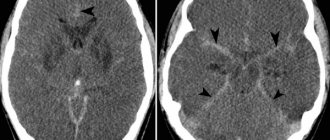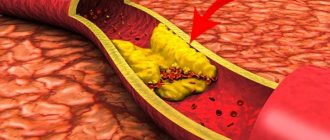Epilepsy refers to diseases that manifest themselves with different symptoms and have different origins. The clinical picture of the disease is described in many manuals, and there are more than 65 types of epileptic diseases in the world. This is due to various factors that provoke the appearance of specific seizures, which in turn become permanent.
Epilepsy is a chronic non-infectious disease that forms in the brain tissue and provokes the release of neurons into the body, resulting in uncontrolled seizures, convulsions, loss of consciousness, etc. Each type of pathological lesion has different manifestations. In particularly difficult cases, an epileptic seizure is accompanied by loss of orientation in space, fainting and uncontrolled urination. Often an attack is caused by profuse salivation, which is popularly defined as “foaming at the mouth.”
However, medicine, in the course of its development, has formed a specific therapy for each type of disease, but even with such diversity and possibilities, there remain certain forms of the disease that are not amenable to drug therapy. For example, a pharmacoresistant form, in which the affected areas of the brain do not respond to the components of the drugs, and the clinical picture remains unchanged. A person continues to have seizures, his condition worsens due to constant exhaustion of the body - the tension of muscle tissue during seizures is several times higher than normal. In such cases, surgical treatment is used, aimed at partial or complete removal of the affected cells or their direct stimulation.
Benefits of use
Surgical interventions for such pathologies have been practiced for more than 100 years. Thanks to the developed branch of neurosurgery and innovative developments in the field of medicine, their effectiveness is 80%. People who undergo surgery manage to completely get rid of chronic seizures and return to a full life. Modern technologies make it possible to create a detailed map of the areas of the brain that are responsible for the vital functions of the body - speech, movement, memory and coordination. This approach to therapy allows you to reduce the risk of complications after manipulation to a minimum.
Indications for surgical treatment
It is known that this disease is as diverse as the factors that provoke it. Therefore, in each individual case, therapy is selected solely based on the patient’s medical history and test results, CT or MRI diagnostics, as well as EEG. There are two types of treatment for this pathology:
- medicinal;
- surgical.
Epilepsy surgery is an intervention on the brain in which the doctor removes or isolates the area where the seizure occurs. The doctor chooses the type of surgery depending on how and in which zone the epileptic impulse spreads. It is the location of the affected areas that largely determines the methods of intervention and the use of specific equipment. The possibility of surgical treatment is discussed when a number of conditions are met:
- The disease has a focal (focal) character. The epileptogenic region of the brain is precisely determined, the removal of which will relieve the patient from seizures.
- Weighing the risks. Any surgical activity should not lead to a deterioration in the person’s quality of life due to neurological or neuropsychological deficits.
- The form must be exclusively pharmacoresistant, that is, at least two drugs have no effect on the affected areas.
Since the operation is prescribed in special cases, preparation and preliminary procedures before the intervention also require attention. Through proper diagnosis and examination, a complete picture of the onset and development of the disease in the patient is often restored.
Epidemiology
Epilepsy is one of the most common neurological diseases. It is 10 times more common than multiple sclerosis and 100 times more common than motor neuron disease (amyotrophic lateral sclerosis).
Morbidity . In most developed countries, 50-70 cases of epilepsy per 100,000 population are recorded annually. There were no differences in the value of this indicator across different European countries and regions.
Prevalence . The numerical prevalence of epilepsy is 5-10 cases per 1000 population. This figure does not include febrile seizures, which occur in 5% of children, and single seizures. No differences in this indicator were recorded across European countries and regions. The prevalence of epilepsy in general for all age groups is 5%. Consequently, every 20th representative of the population will experience an attack during his lifetime.
Factors determining incidence and prevalence. The incidence rate varies significantly in different age groups, with high rates in early childhood, lower rates in young adulthood, and a second peak after 65 years. The results of most studies confirm that epilepsy occurs with a higher frequency in men than in women. In recent years, there has been a decrease in the absolute number of children and a sharp increase in the number of elderly people with epilepsy.
The prevalence of epilepsy is somewhat higher among population groups with a low standard of living. These demographics must be taken into account by health care systems.
Forecast . Epilepsy lasts on average about 10 years, although for many the period of active seizures is significantly shorter (less than 2 years in more than 50%). A significant number (20-30%) of patients suffer from epilepsy throughout their lives. The nature of attacks is usually determined at the initial stage of their onset, and this, along with other prognostic factors, makes it possible to provide fairly high accuracy in predicting the outcome of the disease within several years after its onset.
Epilepsy in the entire population. Among the indigenous population of Europe, out of 1,000,000 inhabitants, 5,000-10,000 suffer from epilepsy. At least 500 new cases of epilepsy (per 1,000,000 population) are registered annually, along with the same number of single febrile seizures. 20,000 out of 1,000,000 residents have a history of one or more attacks. About a third of these people have fewer than one attack per year, another third have fewer than 12 attacks per year, and the rest have more than one attack per month (20% of this number have more than one attack per week). Approximately 40% of people with epilepsy do not have any additional behavioral, neurological and/or intellectual disorders.
Mortality . The causes of death in approximately a third of patients are directly caused by disturbances during the attack, and this ratio is unchanged for any European country. Sudden, unexpected death can occur among young people with active epilepsy, most often when seizures are convulsive in nature. Many deaths occur in patients during night sleep. In this situation, the risk ranges from 1.3 to 9.3 cases per 1000 patients.
Examination and tests before surgery
The high effectiveness of such radical treatment can only be achieved with strict adherence to all standards of preparatory examinations carried out before the day of surgery. They include:
- MRI according to the epileptic scanning program;
- EEG video recording, which is mandatory for any form of pathology;
- a detailed description or video of attacks that were recorded at home;
- study of the patient’s neuropsychological profile to confirm pre-existing deficits in mental functions;
- analysis of possible risk factors and complications that may arise during and after surgery;
- consultation with an epileptologist.
Surgical manipulations are carried out only in specialized centers and specialized clinics with the mandatory presence of resuscitation equipment.
Surgical treatment in adults and children is carried out according to a similar protocol, except for cases of pathological formations in the brain, when the presence of a histologist and oncologist is necessary. The best results are achieved when the manipulations are performed by a neurosurgeon specializing in the treatment of epilepsy.
Intracranial EEG recording
EEG (electroencephalogram) is a diagnostic test that patients with any damage or pathology of the brain must undergo. This method allows us to establish normal electrical activity and identify pathological potential of the brain and disturbances in its structure. EEG is widely used for:
- epilepsy;
- differential diagnosis of epileptic seizures;
- non-epileptic paroxysmal states.
EEG cannot be assessed as the main source of diagnosis. By its specificity, most of the indications are passive. Registration of EEG data in the absence of significant stimuli does not allow us to determine the reactivity of certain normal rhythms and obtain a detailed picture with reliable information about pathological activity.
Therapeutic drug control
The concentrations of some antiepileptic drugs may be continuously monitored to optimize treatment effectiveness, prevent and/or detect toxicity, or detect or confirm low drug levels in the blood. Rapid methods for determining drug concentrations should be available in laboratories for the following antiepileptic drugs: phenytoin, carbamazepine, valproate, phenobarbital, ethosuximide and primidone. All laboratories must participate in a quality control program.
Chromatographic assays are available for all other antiepileptic drugs and important metabolites (eg, lamotrigin and gabapentin, carbamazepine-10,11-epoxide), although their value in routine practice has not been established.
Types of surgical treatment
Surgical treatment in Russia is based on several techniques that are widely used throughout the world and have excellent success rates in practice. However, it is worth noting that 100% effectiveness is ensured not by the method of surgical intervention, but by other factors that determine the period of the disease, the degree of brain damage, the stage of development and the individual physical and neurological data of the patient. Therefore, it is almost impossible to select the most effective method. Main types of interventions:
- resection of the temporal lobe;
- lesionectomy;
- callosotomy of the corpus callosum;
- functional hemispherectomy;
- vagus nerve stimulation;
- multiple sublial dissections;
- implantation of the RNS neurostimulator.
The choice of a specific type of operation depends entirely on the doctor, who, based on existing data about the patient’s condition and test results, approves the method that is most effective in a particular example. In complex, atypical situations, a council with the participation of several specialized doctors gathers and a decision is made on a certain type of surgical therapy.
Temporal lobe resection
Removal of the temporal lobe of the brain or individual structures through a lateral approach. This surgery may involve removal of the amygdala/hippocampus. The introduction and use of EEG showed that the cerebral scar and the surrounding medulla are an epileptogenic focus that causes seizures of varying strength. As a result, this led medicine to the conclusion that temporal lobe epilepsy is an almost independent nosological form. Resection surgical methods are used in cases where the patient has undergone complete diagnostics and drug therapy, which has not yielded results.
Statistics from the Ministry of Health indicate that 50% of all cases of pathology are complex partial epilepsy. The results of various researchers in the field of medicine and neurosurgery show that after surgical treatment of this pathology, in 70–90% of patients, attacks are completely stopped or become rare. Based on these data, a modification of anterior lobectomy with resection of the lateral cortex exclusively was proposed. Over the course of many years of practice and healing, it was announced that resection of the affected parts of the temporal lobe makes it possible to completely get rid of epileptic seizures.
Lesionectomy
It is known that in epilepsy, brain tissue is mostly affected. Under strong pressure from the release of neurons, tissues quickly wear out, and healthy tissue begins to gradually disintegrate and is replaced by a structurally altered cell, which is an uncharacteristic node. Lesionectomy is a less popular therapy, but it is also effective in certain cases.
These manipulations are surgical interventions aimed at removing isolated non-functioning areas of the brain that have arisen as a result of trauma, cancer, malformation of blood vessels and other formations that provoke seizures. To a greater extent, this operation has an effect. Patients can be completely or partially relieved of attacks and then follow the doctor's recommendations to avoid stressful situations in everyday life.
Callosotomy of the corpus callosum
Callosotomy is a separate type of surgery used in the treatment of epileptic pathology. It involves cutting the corpus callosum, namely the structure responsible for connecting both hemispheres of the brain. Prescribed to patients who have generalized seizures and bilateral independent epileptic bursts in the frontal lobes. In addition, the category of patients for whom this therapy is recommended includes patients with frequent attacks, accompanied by a rapid loss of muscle tone (the person falls). Often during such seizures, injuries and damage to the musculoskeletal system occur, so such surgery should be performed at the first manifestations of epileptic cases. The operation itself involves neutralizing the rapid movement of convulsive activity from one lobe to another. Such interventions rarely provoke complications, so those operated on quickly go through the rehabilitation period and return to normal life.
Functional hemispherectomy
An option recognized throughout the medical world in the treatment of symptomatic forms of drug-resistant focal epilepsy in patients with malformations of the brain and some acquired lesions of one of its hemispheres. The prognosis for the effectiveness of this method depends on many factors, not the least of which are the age and physical condition of the patient. This method is considered the most risky because it has a lot of contraindications. Those who undergo the procedure face a long road to recovery as it is used to diagnose catastrophic epilepsy, which is accompanied by severe seizures with loss of consciousness and increased uncontrollable salivation.
This procedure is used to treat various seizure disorders when the source of the epilepsy is localized to a wide area of one hemisphere, especially Rasmussen's encephalitis. Surgical intervention is carried out during a “calm” period, when a person does not experience prolonged seizures that provoke complete exhaustion of the body. It is used when medications, other types of surgery, or less invasive procedures that significantly impair function or put the patient at risk for further complications have failed.
Vagus nerve stimulation
Unlike other listed methods, vagal stimulation is prescribed in cases where drug treatment does not produce results, and other operations cannot be performed due to certain reasons and contraindications. The vagus stimulator itself consists of a pulse generator with a battery and a connecting wire with platinum electrodes. They are attached under the left subclavian region, and the electrodes are fixed on the person’s cervical area. The introduction of a foreign body itself is carried out using two small incisions, so it is difficult to call this procedure a surgical intervention. It takes no more than 1–1.5 hours and is performed under general anesthesia. Operating principle:
- the generator sends electrical impulses at certain intervals;
- the frequency of stimulation and its activity is regulated by the doctor;
- carried out on an outpatient basis;
- the increase in intensity depends on the effectiveness of vagus nerve stimulation.
With some experience, a person can independently regulate the strength and intensity of stimulation. As an attack approaches, it is possible to prevent the spread of epileptic activity, thereby stopping the attack at the initial stage.
Multiple sublial dissections
This procedure makes it possible to control seizures that occur in areas of the brain where they cannot be safely removed. In medical practice, against the background of progression of lesions of an epileptic nature, there are cases where, in the course of work, damaged areas with an irreversible process of decay were removed. Patients experienced severe headaches, attacks increased and became more severe, which led to partial loss of sensation in the limbs.
The procedure itself looks quite simple and safe. The surgeon makes several small incisions in the brain tissue. These cuts significantly reduce the number of seizures, but do not affect normal brain activity, which preserves all the functionality of the body and intelligence. However, such manipulations require extreme concentration and care, since any unnecessary or excessively deep incision will provoke irreversible processes.
Implantation of the RNS neurostimulator
The RNS neurostimulator is designed to control the electrical activity of the brain in patients with epilepsy and prevent convulsive contractions by suppressing unnatural impulses in neurons. This device was developed by American scientists and is widely used in practice throughout the world. The use of this device stimulates:
- resumption of correct speech;
- memory and attention;
- ability to concentrate;
- performance;
- social activity.
The entire system consists of implantable and external components. In the first case, it is the neurostimulator itself; in the second, it is a laptop with an adapted program that allows you to monitor brain activity and the release of neurons. The RNS system also makes it possible to view the patient's electroencephalogram in real time.
Laboratory research
Laboratory tests are necessary in diagnosing the causes of attacks, during treatment with anticonvulsants, and during clinical examinations. The following laboratory tests should be available in health care organizations caring for patients with epilepsy.
Blood test: hemoglobin, hematocrit, blood smear, white blood cell count, differential analysis, platelet count, folic acid, vitamin B12, pyridoxine (B6), acanthocytes, blood clotting and lymphocyte vacuolation.
Urinalysis: protein, glucose, microscopy, ketones and blood impurities.
Biochemistry : electrolytes, protein, urea, immunoglobulins, calcium, transaminase, gamma-glutamine transferase, alkaline phosphatase, thyroid hormones, phosphate, magnesium, bilirubin, glucose, creatinine, amylase, iron, ceruloplasmin, lactic acid, ammonia, prolactin, porphyrin and his predecessors.
Neurophysiological studies: retinogram, visual evoked response and visual evoked potential.
Virology : serological tests for viruses and syphilis.
Access to screening: Screening should be available to detect congenital and acquired metabolic disorders. Samples can be screened for several intermediate metabolites, including ketone bodies, various carbohydrates, mucopolysaccharides, amino acids, organic acids, purines and pyrimidines, polyunsaturated fatty acids, and leukocyte enzymes.
The effectiveness of surgical treatment for epilepsy
Surgical interventions, due to their specificity, always have areas of risk that are determined before the start of the procedure. To do this, a complete clinical picture of the pathology is collected and a decision is made to use one of the types of therapy that is most suitable for a particular patient. The effectiveness is also difficult to determine, since many factors depend on the individual and the extent of damage to healthy cells. Therefore, each type has its own advantages and disadvantages.
Even if the indications for surgery are the same in different people, this does not guarantee a similar result. Many people face problems that arise during the rehabilitation period. Each patient tolerates such manipulations in his own way, but even with such uncertain prognosis, medicine promises a positive result.
Forecast
After the operation, the patient must undergo a certain course of rehabilitation, constantly being under the supervision of a doctor. During this period, some examinations, tests and diagnostics will again be carried out. This is necessary to determine the preservation of functionality and the ability to think and make decisions quickly. A number of specific trainings are also carried out, during which stressful conditions are created and neurological processes in the cerebral cortex are observed. In other words, with correct and objective therapy, as well as consistent recovery after surgery, a person can count on a life without attacks and feelings of anxiety.
Recovery
Chronic epilepsy often has negative social consequences, especially in the sphere of family, school, and work. These problems can be a serious obstacle to successful treatment or an obstacle to improving the patient's quality of life, even when medical or surgical treatment has been successful.
The clinical team that specializes in epileptology should therefore make available rehabilitation tools that provide, in addition to assessing the level of psychological and social competence, also training, support and guidance. This could be group psychotherapy, family support, career guidance.
After surgery for epilepsy, it may be necessary to carry out neurological and neuropsychological rehabilitation, for example to restore memory deficits. Rehabilitation can be provided by specified specialists or a psychosocial team consisting of a doctor, social worker, nurse and psychologist.
Nonconvulsive manifestations
These are the most difficult seizures to diagnose.
Can occur in children and adults. Symptoms can manifest themselves in the form of mental pathology - clouding of reason. This form responds very poorly to drug therapy. Symptoms:
- short-term attacks with “switching off” consciousness;
- change in facial expressions;
- vivid manifestations of pathological joy or negative emotions: rage, even suicide;
- delirium, visual hallucinations, confusion and nonsense of speech.
This form of the disease is the most dangerous, because it is often undiagnosed and untreated.
Electrical stimulation of the vagus nerve
This type of treatment is prescribed as an additional method of therapy.
In many countries it is an adjuvant treatment method. It reduces the number of partial seizures in children and adults. Therapy helps prevent the abnormal activity that leads to seizures.
An electrical pulse generator is used and inserted under the collarbone or under the skin near the armpit. The electrode is attached to the vagus nerve. This method allows to reduce the frequency of seizures in patients.
Providing assistance
The following requirements are mandatory for provision.
1. Access to local epilepsy service.
2. Access to a specialized multidisciplinary team including:
- adult and pediatric epileptologist;
- special (patronage) nurse;
- clinical psychologist;
- social worker;
- professional therapist.
3. Access to hospitalization facilities in critical situations, such as status epilepticus.
4. Access to a highly qualified neurophysiologist.
5. Access to laboratory tests and therapeutic drug monitoring.
6. Access to a range of brain imaging techniques, especially MRI.
7. Access to a program for surgical treatment of epilepsy.
8. Access to a dedicated assessment unit for intermediate care.
9. Access to counseling services, including advice on planning conception and upcoming pregnancy.
10. Access to assessment by a psychologist specializing in epilepsy.
11. Access to an epilepsy helpline and the possibility of contact with voluntary public organizations.
12. Freely accessible and clearly presented written and other types of information about seizures, types of epilepsy, research and treatment methods.
Symptoms
The area of brain damage is determined based on the symptoms experienced by the patient.
They help determine the type of pathology and prescribe the necessary therapy. If the temporal part is affected, patients experience impaired memory and sound perception. Patients think that they hear some kind of music or sounds, although they are absent. They experience emotional attacks, which are accompanied by anxiety, anger, feelings of happiness and joy.
Manifestations of the lesion can be simple, complex, convulsive and combined. Most often, complex manifestations occur, with confusion and automatisms. The attack is preceded by an olfactory, visual, gustatory, auditory, mental, somatosensory or vegetative-visceral aura.
When the frontal lobe, which is responsible for motor function, is damaged, the patient experiences chaotic uncontrollable twitching of the arms and legs, hands and fingers, the facial muscles begin to play, and the eyes move from side to side. Partial seizures in such cases manifest themselves:
- high duration;
- minimal impact on consciousness;
- rapid occurrence of repeated attacks;
- frequent manifestation of motor disorders;
- the presence of previous automatisms;
- fall of the victim.
If the occipital part of the brain, which is responsible for visual function, is damaged, the patient experiences the appearance of spots in the eyes, blinking and colored lights, visual fields are lost, and a severe headache similar to a migraine occurs.
When the parietal lobe is damaged, patients experience impaired sensory ability and a localized feeling of tingling, cold or warmth, although the ambient temperature remains unchanged.
Diagnostics
Timely and accurate diagnosis of the disease is the primary task of doctors, which helps to select the most effective treatment regimen for epilepsy.
Taking incorrectly prescribed medications leads to a worsening of the patient's condition and an increase in partial epileptic seizures. To identify partial epilepsy, patients at the neurology clinic of the Yusupov Hospital are prescribed magnetic resonance imaging and electroencephalogram, which are necessary to determine the cause and focus of the disease.
When making a diagnosis, epileptologists and neurologists at the Yusupov Hospital are based on the results of examination, instrumental studies, complaints and information about the patient’s symptoms.










